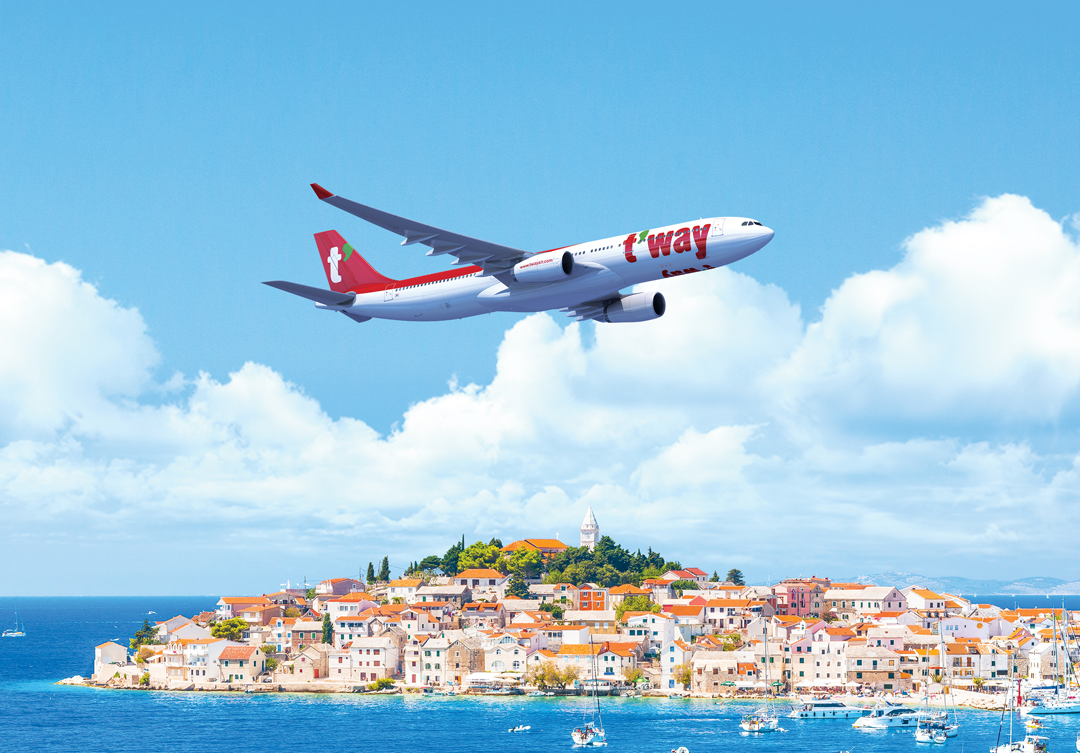Skift Take
T'way Air is about to make the leap from regional low-cost player into a true transcontinental airline. History tells us that it may find this challenging.
Korean low-cost carrier T’way Air is set to make a dramatic debut in the European market. Earlier this week, the European Commission announced its approval of Korean Air’s merger with local rival Asiana Airlines – however, there are some strings attached.
In technical speak, this is known as ‘conditional clearance’ and it means the green light is dependent on certain commitments being honored.
Alongside Asiana selling its cargo business, the most notable demand from the Europeans is allowing a new entrant into the passenger market. T’way has been named as the third-party operator who will take on overlapping routes to enhance post-merger competitiveness.
That’s T’way To Do It
Starting in the second half of this year, T’way is due to launch four routes from the South Korean capital to the European Union. These are from Seoul’s Incheon International Airport to Rome, Barcelona, Frankfurt, and Paris and are in direct response to the proposed merger.
In developments unrelated to the regulatory approval, a new T’way service from Seoul to Zagreb, Croatia is also due to begin on May 16.
All of this marks a radical shift in the geographic gravity of the South Korean low-cost carrier’s network. At present, T’way focuses on the Asia-Pacific region, with a single route to Sydney being its only true long-haul link.
While T’way is one of the biggest budget carriers in its home market, most European consumers will not know the brand. This is unlikely to worry T’way executives who will likely leverage the company’s prominence among Asian travelers to fill the planes with passengers from South Korea and neighboring countries.
Can T’way Go the Distance?
Korean Air said in a statement that it “plans to provide comprehensive support to T’way Air.” Although the flag carrier did not specify what specific forms of support will be offered, this is likely to include logistic and operational guidance for entering these major new markets.
T’way CEO Jeong Hong-geun has previously suggested that Korean Air may lease his airline Airbus A330 widebody jets to enable long-haul expansion. As T’way already serves Australia using this type of plane, it would be a natural fit for the company.
However, even if T’way can make the new routes profitable on paper, it may have another problem. With Russian airspace closed until further notice, the low-cost airline will be forced to fly a longer, more southerly (and costly) track to and from Europe.
Comparable nonstop Seoul-Paris flights can take up to 13 hours. This would put the French capital at the very limits of the aircraft’s range, especially if kitted out in a dense configuration with lots of economy seats. It remains to be seen if a refueling stop or multi-city routing will be required.
Previous low-cost, long-haul routes between Asia and Europe have struggled. Air Asia X failed to make Kuala Lumpur to London work in the early 2010s, although the company has said it may re-enter the market. Other attempts such as Oasis Hong Kong collapsed spectacularly after high-profile launches.
All Eyes on Washington
The decision by European regulators means the United States is the only remaining market yet to give the merger its blessing.
Türkiye was the first to approve the deal back in February 2021, followed by Taiwan, Thailand, The Philippines, Malaysia, and Vietnam later that year. Nods from South Korea, Singapore, Australia, and China came in 2022, while the U.K. said yes last year.
Japan followed suit just a couple of weeks ago, starting what Korean Air hopes will be a flurry of final approvals.
Given the scale of the proposed deal, many regulators have requested pro-competitive changes to be implemented. Officials in the U.K. for example, said Virgin Atlantic should be allowed to start a London-Seoul route as a condition of their approval.
If realized, the combined business would create the 10th largest airline globally by fleet size. The more dominant Korean Air brand would remain and Asiana’s corporate identity would be phased out as the merger concludes.
Korean Air added that it “continues to be focused on its discussions with the U.S. competition authority to finalize the overall merger review processes as soon as possible.”
The Daily Newsletter
Our daily coverage of the global travel industry. Written by editors and analysts from across Skift’s brands.
Have a confidential tip for Skift? Get in touch
Tags: airbus, asiana airlines, korean air, mergers and acquisitions, seoul, south korea
Photo credit: T'way Air T'way Air / T'way Air
